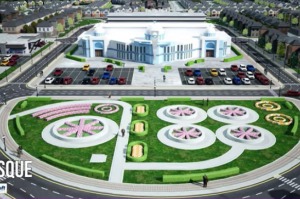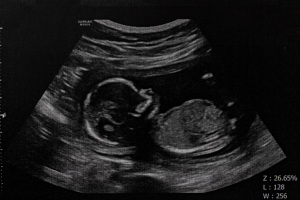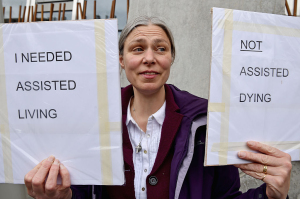'The Bible Experience:' Exclusive Rare Artifacts Presented by Mark Burnett and Roma Downey (PHOTOS)
 5 photos(Photo: The Christian Post / Stoyan Zaimov)People view biblical artifacts during "The Bible Experience" opening night gala on Tuesday, March 19 in New York.
5 photos(Photo: The Christian Post / Stoyan Zaimov)People view biblical artifacts during "The Bible Experience" opening night gala on Tuesday, March 19 in New York.
NEW YORK – New Yorkers and people living in surrounding areas are being treated to an exclusive exhibit starting Wednesday that combines paintings and set props from History Channel's "The Bible" series with the world's largest private collection of biblical texts and artifacts.
"We want everyone to come and see this. These are things that have never been seen before in New York City," "The Bible" series Producer Mark Burnett said at the opening night gala on March 19, attended by The Christian Post.
"The Bible Experience," located at 450 W. 14th St. in Manhattan, runs March 20-27 and is entirely free of charge.
The gala on Tuesday night showcased a number of the items on display, and was attended by Burnett and his wife, Roma Downey, who helped produce "The Bible" and also stars as the older version of Mary in the last two episodes of the show. Some of the series' biggest stars also attended the event, including Diogo Morgado, who plays Jesus, and Darwin Shaw, who plays Peter.
"It is a little breath of heaven to have all this in Manhattan. It is a gift to the city. We are hoping many people will come and enjoy [the exhibit] – it is something sacred, I felt it when I walked in," Downey commented.
The exhibit features paintings of some of most memorable scenes from the TV show, and in the center hangs suspended in mid-air a giant crown of thorns that is said to weight two tons. The dimmed lights and emotive music from the show create an enthralling atmosphere, but the real artifacts and biblical texts on display are what many will come to see.
"The artifacts help bring some real-life validity to the whole story that is being shared. This is a book (Bible) that has been with us for thousands of years and that's what the TV series is trying to bring to life," Steve Green, president of Hobby Lobby and the Green Collection's benefactor, told CP in an interview at the event on Monday.
"I imagine that it (the series) will bring interest to a lot of people to understand and hear the Bible; hopefully it will help them engage in reading the Bible, and also get them interested in its history. That's what the artifacts bring – part of the history of the book," he added.
The Green Collection, which has also been displayed at the Vatican, hosts one of the largest private collections of Dead Sea Scrolls, 4,000 Jewish Torahs, rare illuminated manuscripts, early tracts and Bibles belonging to Martin Luther, and the Western Hemisphere's largest collection of cuneiform tablets, an early form of writing.
Some of the items that will be available for viewing at The Bible Experience include:
Dead Sea Scroll Fragments: Daniel 10:18-20, and Jeremiah 23:6-9: Three pieces will be on display in this exhibit, containing portions from the books of Daniel, Jonah and Jeremiah
Medieval Torah Scroll, 14th century: One of the oldest surviving Torah Scrolls in the world
Codex Climaci Rescriptus: Between the late 4th and early 9th centuries AD, it represents one of the earliest near-complete Bibles in the world. With two layers of text, some of which are written in Aramaic, the language of Jesus Christ
Bodmer Papyrus: From the 3rd century AD, these leaves are from one of the oldest near-complete books of Psalms in Greek
Gutenberg Leaf: Isaiah 44-5, Mainz, Germany, 1454: The first book printed in moveable typeset in the Western world
Aitken Bible: First English language Bible printed in the United States and the only Bible ever officially authorized by the Congress
Eliot Indian Bible: First Bible printed in America. It was translated into Algonquin to help convert the Native Americans
King James "She" Bible, London, England, 1613: Commissioned by King James the 1st of England and the 6th of Scotland. It took a committee of 47 scholars seven years to finish the project. It is significant in that it contained a printing error in the Book of Ruth
Pocket Bible, Italy, c. 1240-1250: Produced in Italy between 1240 and 1250, it contains all of the books of the Bible in a single volume
Rice Psalter, London, England, c. 1450: This book of Psalms is an exquisite example of English Gothic manuscript illumination
Complutensian Polyglot, Vol. 1, Alcalá de Henares, Spain, 1514-1517: The first printed polyglot of the entire Bible; it simultaneously displays the text of the Bible in as many as four different languages: Hebrew, Greek, Aramaic and Latin
Cairo Geniza Manuscript Fragments, Cairo, Egypt, c. 1150 – c. 1250: Dating from the 12th to the 13th centuries, contains portions of prayer books from the Karaite Jewish tradition, including morning prayers, prayers for the Holiday of Booths, and prayers of the New Moon
Green explained to CP that the artifacts inside the exhibit are arranged in chronological order, so people can walk in and follow a timeline of progression that goes from ancient times to artifacts only a few hundred years old.
"There is a brick over there from the actual wall of Jericho. There are nails from the time of the crucifixion of Christ. The Eliot Bible, 1685, is written in the Algonquin language," Burnett added, presenting some of the rare items.
"People who maybe can't afford to go to Jerusalem and the river Jordan and see the Dead Sea Scrolls and these artifacts – the Green family literally stepped up in about five seconds from a phone call to provide these rare, valuable artifacts, assembled for people for free."





























